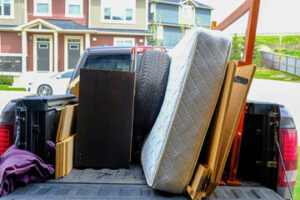Electrician Fort Worth are the unsung heroes of the modern world, working diligently behind the scenes to keep our homes, businesses, and communities powered and illuminated. In this comprehensive article, we’ll explore the crucial role of electricians, their skills, training, career opportunities, and the ever-evolving landscape of electrical work in the 21st century.
The Role of an Electrician:

Electricians are skilled professionals responsible for installing, maintaining, and repairing electrical systems in various settings. Whether it’s wiring a new home, upgrading electrical panels, troubleshooting electrical issues, or installing lighting fixtures, electricians play a vital role in ensuring the safe and efficient flow of electricity.
Skills and Training:
Becoming an electrician requires a combination of technical skills, practical experience, and formal education. Most electricians start their journey by completing an apprenticeship program, where they learn the fundamentals of electrical work under the guidance of experienced professionals. These programs typically last four to five years and include classroom instruction as well as hands-on training.
In addition to apprenticeship programs, many electricians pursue formal education through vocational schools or community colleges, where they can earn a degree or certificate in electrical technology. These programs provide in-depth training in electrical theory, code regulations, safety practices, and hands-on skills development.
Key skills for electricians include:
- Technical Proficiency: Electricians must have a solid understanding of electrical principles, circuits, and systems. They should be proficient in reading blueprints, schematics, and technical diagrams.
- Problem-Solving Skills: Electrical work often involves troubleshooting complex issues and finding creative solutions to problems. Electricians must possess strong problem-solving skills to diagnose and resolve electrical issues effectively.
- Attention to Detail: Precision and attention to detail are essential qualities for electricians, as even small mistakes can have significant consequences in electrical work.
- Safety Awareness: Electrical work can be hazardous, so electricians must prioritize safety at all times. They should be knowledgeable about safety protocols, regulations, and best practices to prevent accidents and injuries.
Career Opportunities:
Electricians have a wide range of career opportunities available to them, spanning various industries and sectors. Some common career paths for electricians include:
- Residential Electrician: Residential electricians specialize in installing, repairing, and maintaining electrical systems in homes and apartments. They may work on new construction projects, remodels, or electrical upgrades for existing homes.
- Commercial Electrician: Commercial electricians focus on electrical work for commercial buildings, offices, retail stores, and other non-residential properties. They may be involved in wiring, lighting, power distribution, and other electrical systems.
- Industrial Electrician: Industrial electricians work in industrial settings such as factories, manufacturing plants, and warehouses. They are responsible for maintaining and repairing heavy-duty electrical equipment, machinery, and systems.
- Maintenance Electrician: Maintenance electricians specialize in troubleshooting and repairing electrical issues in various settings, including residential, commercial, and industrial facilities. They perform routine inspections, identify problems, and implement corrective measures to ensure the reliability and safety of electrical systems.
The Future of Electrical Work:
The field of electrical work is constantly evolving, driven by advancements in technology, changing regulations, and emerging trends. Electricians must stay updated on the latest developments in the industry and continue to enhance their skills to remain competitive in the job market.
One significant trend shaping the future of electrical work is the growing demand for sustainable energy solutions. As concerns about climate change and environmental sustainability intensify, there is a growing emphasis on renewable energy sources such as solar, wind, and hydroelectric power. Electricians with expertise in renewable energy systems are poised to play a crucial role in the transition to a more sustainable energy future.
Another emerging trend is the integration of smart technology and automation into electrical systems. Smart homes, smart buildings, and Internet of Things (IoT) devices are becoming increasingly prevalent, requiring electricians to adapt to new technologies and learn how to install and maintain connected electrical systems.
Electricians are the backbone of modern society, ensuring that our homes, businesses, and communities have access to safe and reliable electrical power. With their skills, training, and dedication to safety, electricians play a vital role in shaping the future of electrical work and driving innovation in the industry. Whether it’s wiring a new home, maintaining industrial machinery, or installing renewable energy systems, electricians are masters of modern power, keeping the world powered and illuminated for generations to come.
Electricians are skilled professionals who play a crucial role in ensuring that our homes, businesses, and communities have access to safe and reliable electrical power. From installing wiring and fixtures to troubleshooting complex electrical issues, electricians possess the expertise and training necessary to keep the lights on and the power flowing. In this article, we will explore the important work of electricians, their training and skills, as well as the diverse career opportunities available in this field.
The Role of an Electrician:
Electricians are responsible for installing, maintaining, and repairing electrical systems in a variety of settings. Whether it’s wiring a new construction project, upgrading electrical panels, or troubleshooting electrical problems, electricians are essential to ensuring the safe and efficient flow of electricity. Their work encompasses a wide range of tasks, including:
- Installation: Electricians install wiring, lighting fixtures, electrical outlets, circuit breakers, and other components of electrical systems in homes, commercial buildings, and industrial facilities.
- Maintenance: Electricians perform routine maintenance tasks to ensure that electrical systems are operating safely and efficiently. This includes inspecting wiring, testing circuits, and replacing worn-out components.
- Repair: When electrical systems malfunction or fail, electricians are called upon to diagnose and repair the problem. This may involve replacing faulty wiring, repairing damaged circuits, or troubleshooting complex electrical issues.
- Safety: Electricians prioritize safety in all aspects of their work. They adhere to strict safety protocols and regulations to prevent accidents, injuries, and electrical hazards.
Skills and Training:
Becoming an electrician requires a combination of technical skills, practical experience, and formal education. Most electricians start their careers by completing an apprenticeship program, which typically lasts four to five years. During this time, apprentices work under the supervision of experienced electricians, gaining hands-on experience and learning the skills necessary to become proficient in the trade.
In addition to apprenticeship programs, many electricians pursue formal education through vocational schools or community colleges. These programs offer courses in electrical theory, blueprint reading, electrical code regulations, and safety practices. Upon completion of their training, electricians may obtain certification or licensure, depending on the requirements of their state or jurisdiction.
Key skills for electricians include:
- Technical Proficiency: Electricians must have a solid understanding of electrical principles, circuits, and systems. They should be able to read blueprints, schematics, and technical diagrams accurately.
- Problem-Solving Skills: Electrical work often involves troubleshooting complex issues and finding creative solutions to problems. Electricians must possess strong problem-solving skills to diagnose and resolve electrical problems effectively.
- Attention to Detail: Precision and attention to detail are essential qualities for electricians, as even small mistakes can have significant consequences in electrical work.
- Safety Awareness: Electrical work can be hazardous, so electricians must prioritize safety at all times. They should be knowledgeable about safety protocols, regulations, and best practices to prevent accidents and injuries.
Career Opportunities:
Electricians have a wide range of career opportunities available to them, spanning various industries and sectors. Some common career paths for electricians include:
- Residential Electrician: Residential electricians specialize in installing, repairing, and maintaining electrical systems in homes and apartments. They may work on new construction projects, remodels, or electrical upgrades for existing homes.
- Commercial Electrician: Commercial electricians focus on electrical work for commercial buildings, offices, retail stores, and other non-residential properties. They may be involved in wiring, lighting, power distribution, and other electrical systems.
- Industrial Electrician: Industrial electricians work in industrial settings such as factories, manufacturing plants, and warehouses. They are responsible for maintaining and repairing heavy-duty electrical equipment, machinery, and systems.
- Maintenance Electrician: Maintenance electricians specialize in troubleshooting and repairing electrical issues in various settings, including residential, commercial, and industrial facilities. They perform routine inspections, identify problems, and implement corrective measures to ensure the reliability and safety of electrical systems.
Electricians are skilled professionals who play a vital role in keeping our world powered and illuminated. With their expertise, training, and dedication to safety, electricians ensure that our homes, businesses, and communities have access to safe and reliable electrical power. Whether it’s wiring a new home, maintaining industrial machinery, or troubleshooting complex electrical issues, electricians are the unsung heroes behind the scenes, keeping the lights on and the power flowing for generations to come.


